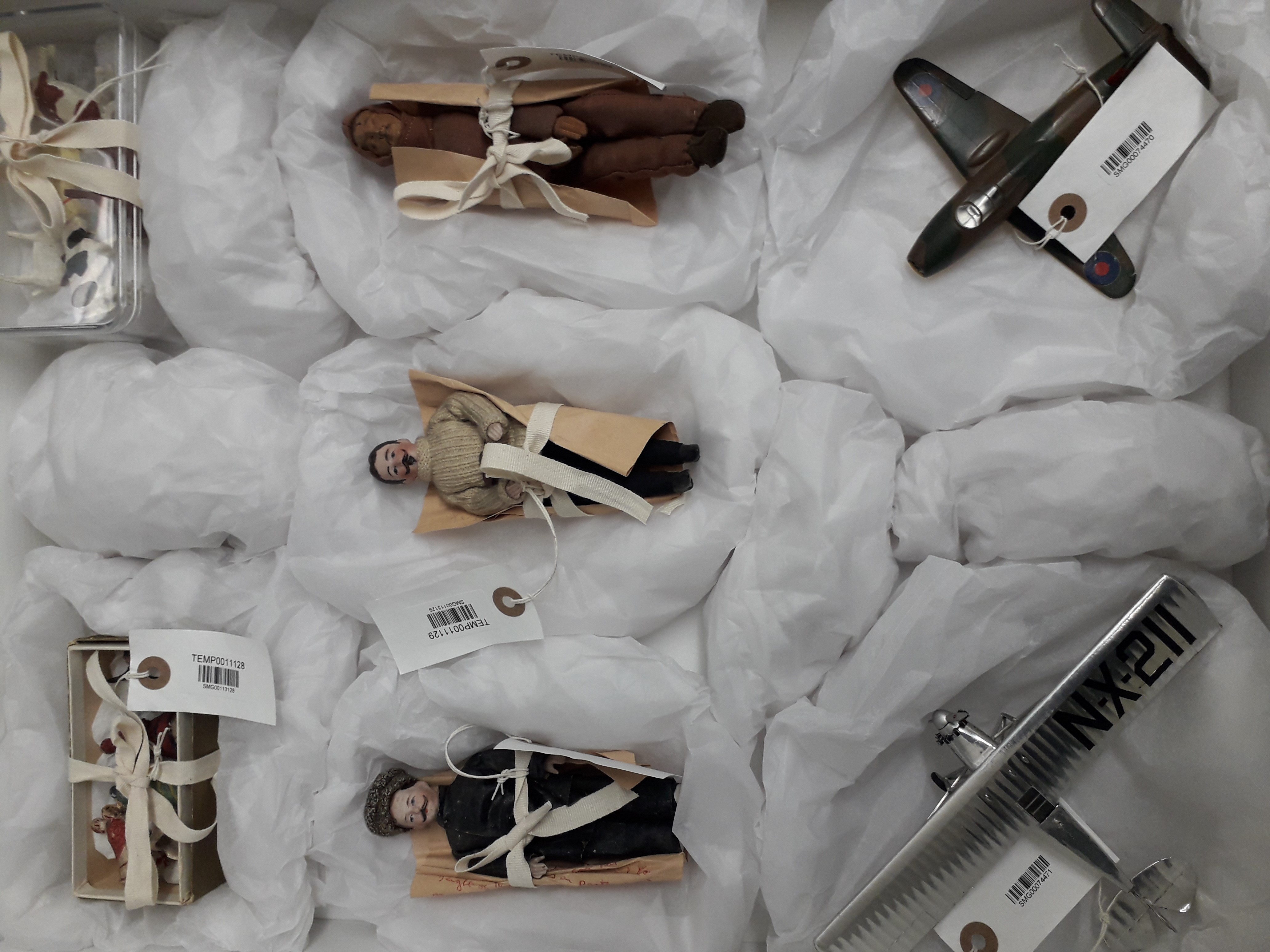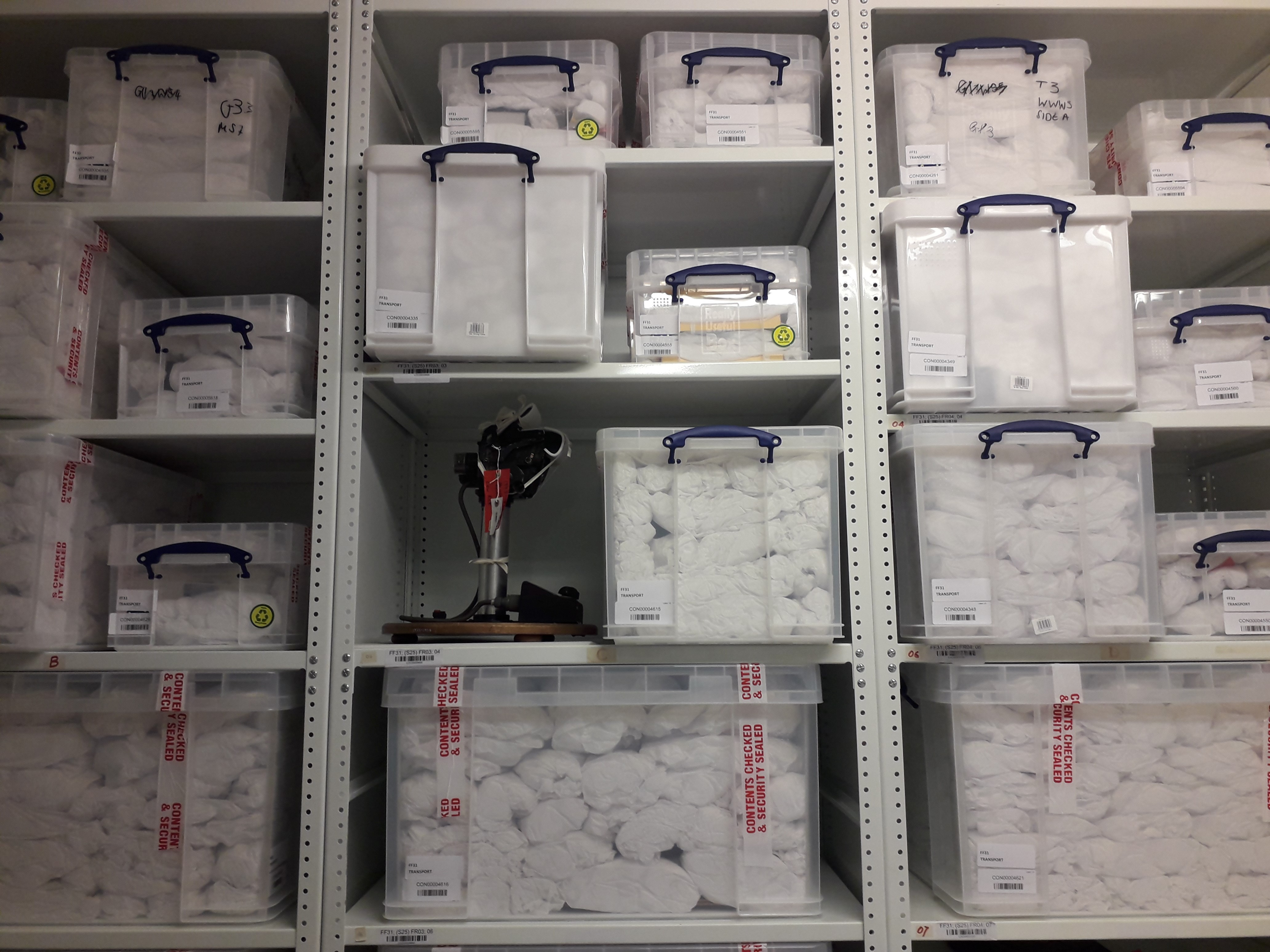At the Blythe House object store in west London, over 50 people are working hard to study, record, digitise, pack and transport 300,000 incredible items from the Science Museum Group Collection to their new home at the National Collections Centre in Wiltshire, which will open regularly to the public from 2023.
This blog series goes behind the scenes with our teams making this ambitious project happen.
Hello, we are the packing team at Blythe House, made up of 8 Collection Packers and 2 Collection Packing supervisors.

After the Hazards, Inventory and Photography team have all seen and examined each object, it is our turn to get them safely packed ready to be transported safely to their new home at the National Collection Centre.
Although we only started our packing mission in May 2019, our team has already packed and prepped over 35,000 objects.
Blythe House stores over 300,000 objects from the collection, each different shapes and sizes. Some of these objects contain hazards, so we have many different approaches to packing these objects safely for transport.
Most objects are suitable to be packed into plastic storage boxes, but for small or more delicate objects we use correx boxes.

Our conservation team has approved all the materials we use, ensuring the materials will not harm or damage the objects while they are packed.
To protect the objects when they are in their box, we use acid free tissue paper which we turn into ‘Puffs’. These support the objects, preventing them from moving while being transported and knocking into other objects in their box.
Other packing materials we use include cotton tape (which you can see in the picture above), plastazote (a type of foam sheet), mellinex (a plastic film) and specialist plastic bags.

Larger objects that are too big to be packed into a box, are instead strapped down onto a pallet, or into a trolley, making sure that any loose or delicate areas are well protected.
In order to move larger and heavier objects we use pallet trucks, scissor lifts and forklifts. Our Transport collection includes many larger objects that we have been busy strapping down onto pallets ready for their move.

Like all the teams at Blythe house, we use barcode technology, providing each container, pallet or trolley with their own barcode.
By scanning the barcode attached to each object by the Inventory Team, we are able to record the object’s new location and which container they have been packed into.
With 35,000 objects packed so far, we have come across some hidden treasures such as a model of the earliest known English coach.

Delicate models such as this are usually supported by a mount that has been custom made to support the carriage, so that it is kept steady and secure in its box whilst travelling to the National Collection Centre.
So far we have packed a huge variety of objects including, a Nobel Prize, sewing machines, models of ships and a urine collection device used by Neil Armstrong during the Apollo 11 mission!
Once an object has been safely packed it will not be seen again in person until it reaches the National Collection Centre. Thankfully many of these items have already been photographed so they can be seen online by people across the world.

After publishing this blog post, we went behind the scenes with the packing team to find out a little bit more about what they do. Click on the Tweet below to find our more.
